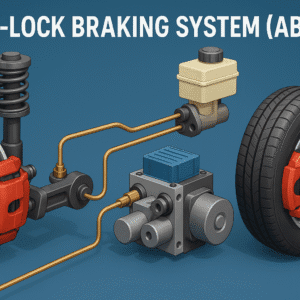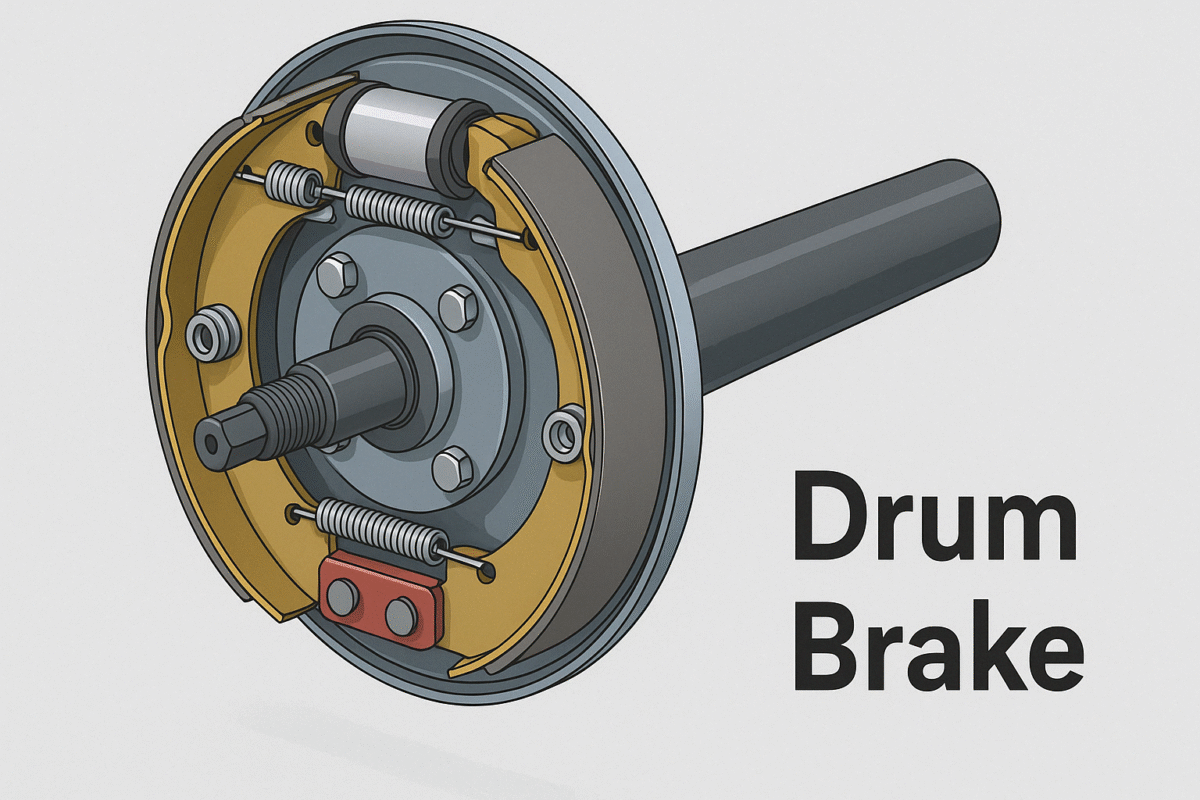
Imagine a world where your car’s brakes don’t just slow you down—they power you up. Welcome to the revolutionary realm of regenerative braking, a technology that’s transforming the way we think about energy efficiency in vehicles.
Have you ever wondered why electric and hybrid cars seem to have an edge in urban environments? The secret lies in their ability to recapture energy that would otherwise be lost. Regenerative braking is not just a fancy feature; it’s a game-changer in the automotive industry, promising to extend range, reduce wear and tear, and contribute to a greener future. But how does it work, and what does it mean for you as a driver?
In this deep dive into regenerative braking, we’ll unravel the science behind this ingenious system, explore its numerous benefits, and address the challenges it faces. From current applications in electric vehicles to exciting future developments, we’ll cover everything you need to know. So buckle up as we brake into the future of automotive technology!
1. Understanding Regenerative Braking
1.1. Definition and basic concept
Regenerative braking is an innovative energy recovery mechanism used in electric and hybrid vehicles to recapture kinetic energy that would otherwise be lost during deceleration. This system converts the vehicle’s momentum into electrical energy, which is then stored in the battery for later use. The process not only improves overall energy efficiency but also extends the driving range of electric vehicles.
The fundamental principle behind regenerative braking is based on the reversible nature of electric motors. When a vehicle slows down or comes to a stop, the electric motor switches to generator mode, creating resistance that slows the vehicle while simultaneously producing electricity.
Visit website: Autobiography Zone
1.2. How it differs from conventional braking
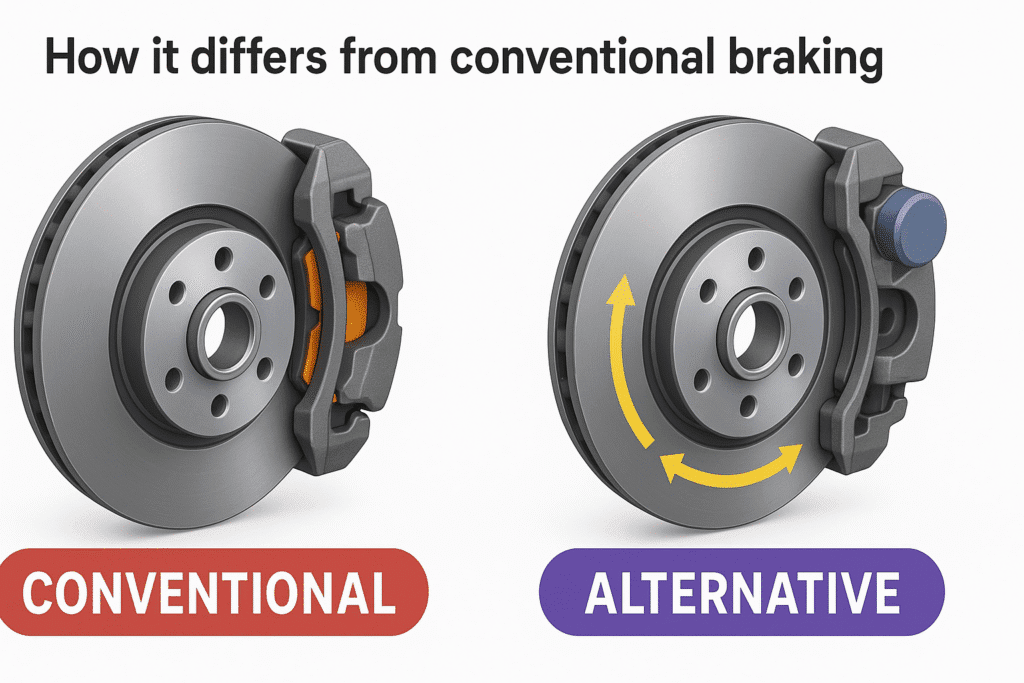
Regenerative braking differs significantly from conventional friction-based braking systems in several ways:
- Energy recovery: While conventional brakes dissipate kinetic energy as heat, regenerative braking captures and stores this energy for future use.
- Wear and tear: Regenerative braking reduces the wear on brake pads and rotors, leading to lower maintenance costs and longer brake life.
- Braking feel: The initial braking sensation may feel different to drivers accustomed to conventional brakes, as regenerative braking often engages before the friction brakes.
- Efficiency: Regenerative braking improves overall vehicle efficiency by recapturing energy that would otherwise be lost.
Here’s a comparison table highlighting the key differences:
| Aspect | Conventional Braking | Regenerative Braking |
|---|---|---|
| Energy | Dissipated as heat | Recovered and stored |
| Wear | Higher wear on brake components | Reduced wear on brake components |
| Maintenance | More frequent brake service | Less frequent brake service |
| Efficiency | No energy recovery | Improves overall vehicle efficiency |
| Braking feel | Consistent feel | May feel different initially |
1.3. Types of vehicles using regenerative braking
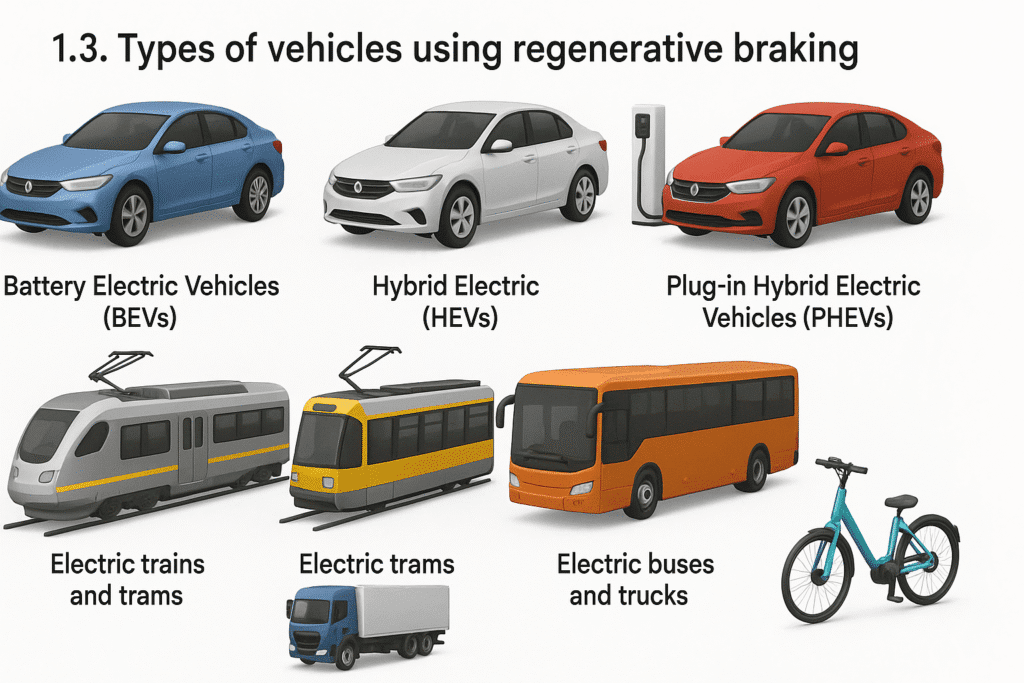
Regenerative braking is primarily used in vehicles with electric powertrains. The most common types include:
- Battery Electric Vehicles (BEVs): Fully electric cars like Tesla Model S, Nissan Leaf, and Chevrolet Bolt utilize regenerative braking to extend their driving range.
- Hybrid Electric Vehicles (HEVs): Traditional hybrids like the Toyota Prius combine regenerative braking with internal combustion engines for improved fuel efficiency.
- Plug-in Hybrid Electric Vehicles (PHEVs): These vehicles, such as the Chevrolet Volt and BMW i3 REx, can operate in all-electric mode and use regenerative braking to maximize electric range.
- Electric buses and trucks: Many commercial and public transportation vehicles now incorporate regenerative braking to improve efficiency and reduce operating costs.
- Electric trains and trams: Rail systems often use regenerative braking to recover energy during deceleration and station stops.
- Electric bicycles and scooters: Even smaller electric vehicles benefit from regenerative braking technology to extend battery life and range.
As we delve deeper into the mechanics of regenerative braking, it’s important to understand the scientific principles that make this energy recovery system possible. Let’s explore the intricate workings of regenerative braking in the next section.
Visit website: Autobiography Zone
2. The Science Behind Regenerative Braking
2.1. Converting kinetic energy to electrical energy

Regenerative braking systems work by harnessing the vehicle’s kinetic energy during deceleration and converting it into electrical energy. This process involves several key components:
- Electric motor/generator
- Power electronics
- Energy storage system
When the driver applies the brakes, the electric motor switches to generator mode. As the wheels slow down, they turn the generator, which converts the rotational energy into electricity. This conversion follows the principle of electromagnetic induction, where a conductor moving through a magnetic field generates an electric current.
The efficiency of this conversion depends on various factors:
| Factor | Impact on Efficiency |
|---|---|
| Motor design | Higher quality motors offer better conversion rates |
| Vehicle speed | Higher speeds generally yield more energy |
| Braking intensity | Gradual braking is more efficient than sudden stops |
| System integration | Well-integrated systems minimize energy losses |
2.2. Energy storage systems
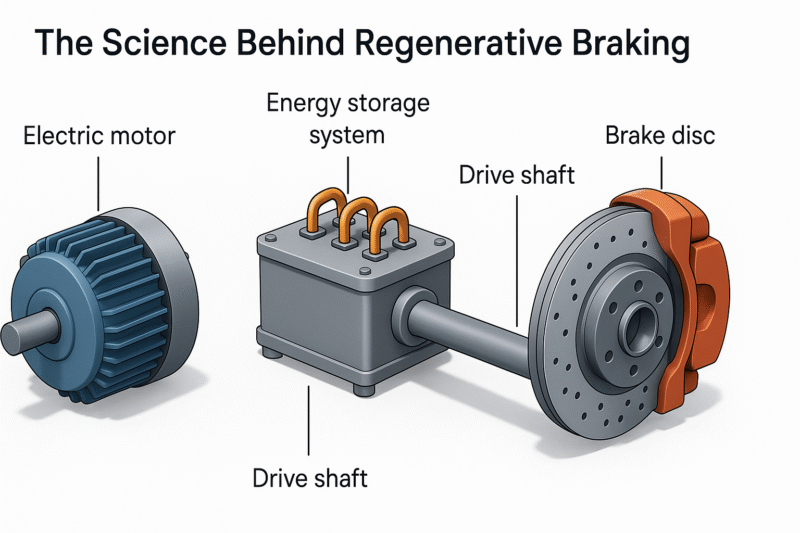
Once the kinetic energy is converted to electricity, it needs to be stored for later use. The most common energy storage systems in regenerative braking are:
- Batteries (typically lithium-ion)
- Supercapacitors
- Flywheels (mechanical energy storage)
Each system has its advantages and limitations:
- Batteries: High energy density, but limited charge/discharge cycles
- Supercapacitors: Rapid charge/discharge, but lower energy density
- Flywheels: High power density, but complex mechanical systems
The choice of storage system depends on the vehicle type, intended use, and desired performance characteristics.
2.3. Power electronics involved
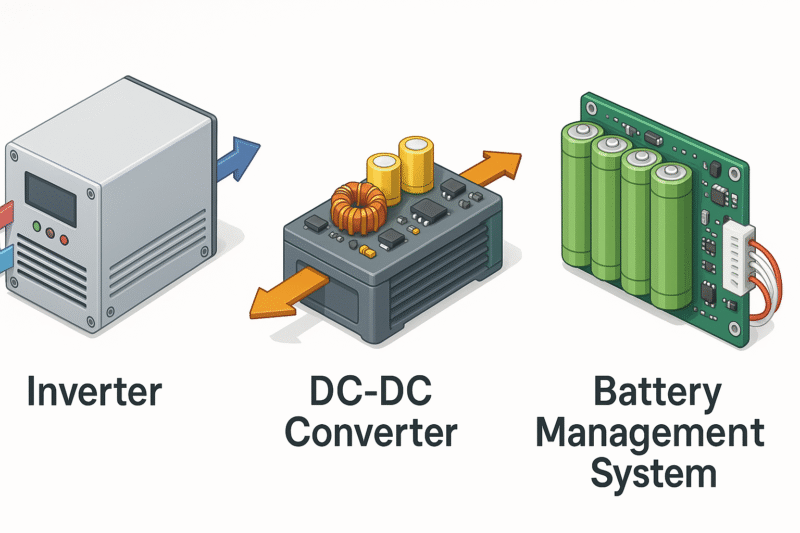
Power electronics play a crucial role in managing the flow of energy in regenerative braking systems. Key components include:
- Inverter: Converts DC power from the battery to AC power for the motor, and vice versa during regeneration
- DC-DC converter: Regulates voltage levels between different parts of the system
- Battery management system (BMS): Monitors and controls battery performance and safety
These components work together to ensure efficient energy conversion, storage, and utilization.
2.4. Efficiency rates
The overall efficiency of regenerative braking systems varies depending on multiple factors:
- Vehicle type and weight
- Driving conditions (urban vs. highway)
- System components and integration
- Driver behavior
Typical efficiency rates for regenerative braking systems range from 60% to 70%. This means that up to 70% of the kinetic energy that would otherwise be lost as heat in conventional braking systems can be recovered and stored for later use.
Factors affecting efficiency:
- Energy conversion losses
- Transmission losses
- Storage system efficiency
- Power electronics efficiency
Regenerative braking is particularly effective in stop-and-go traffic conditions, where frequent braking occurs. In these scenarios, the system can recover a significant amount of energy, leading to improved overall vehicle efficiency and reduced fuel consumption or extended electric range.
As technology advances, researchers and engineers continue to work on improving the efficiency of regenerative braking systems, aiming to push the limits of energy recovery and storage. This ongoing development plays a crucial role in enhancing the performance and sustainability of electric and hybrid vehicles.
Visit website: Autobiography Zone
3. Benefits of Regenerative Braking
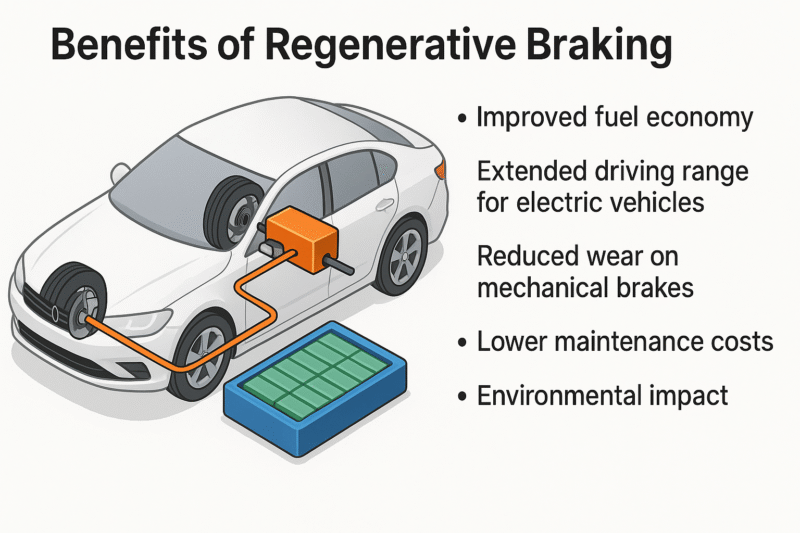
3.1. Improved fuel economy
Regenerative braking significantly enhances fuel economy in both hybrid and electric vehicles. By recapturing energy that would otherwise be lost as heat during braking, these systems can increase overall efficiency by up to 25% in urban driving conditions. This translates to fewer trips to the gas station for hybrid vehicles and extended battery life for electric cars.
| Vehicle Type | Fuel Economy Improvement |
|---|---|
| Hybrid | 10-25% in city driving |
| Electric | 15-30% range extension |
3.2.Extended driving range for electric vehicles
For electric vehicles (EVs), regenerative braking is a game-changer. By recovering energy during deceleration and braking, EVs can significantly extend their driving range. This feature is particularly beneficial in stop-and-go traffic and hilly terrain, where frequent braking occurs. Some EVs can recover up to 70% of the kinetic energy that would otherwise be lost, adding precious miles to their range.
3.3. Reduced wear on mechanical brakes
One of the often-overlooked benefits of regenerative braking is its ability to reduce wear on traditional mechanical brakes. Since the electric motor handles a significant portion of the braking, the conventional friction brakes experience less stress and heat. This leads to:
- Longer brake pad life
- Reduced rotor wear
- Fewer brake fluid changes
3.4. Lower maintenance costs
The reduced wear on mechanical brakes directly translates to lower maintenance costs for vehicle owners. With regenerative braking systems, drivers can expect:
- Less frequent brake pad replacements
- Extended intervals between brake service appointments
- Reduced likelihood of warped rotors due to heat buildup
These factors combined can lead to substantial savings over the lifetime of the vehicle, making regenerative braking systems an economically attractive feature for both manufacturers and consumers.
3.5. Environmental impact
Regenerative braking contributes significantly to reducing the environmental footprint of vehicles. By improving overall efficiency and reducing fuel consumption, these systems help:
- Lower carbon emissions
- Decrease dependence on fossil fuels
- Reduce particulate matter from brake pad wear
In urban areas, where air quality is a growing concern, the widespread adoption of regenerative braking can have a noticeable positive impact on the environment. Additionally, the reduced need for brake pad replacements means fewer discarded brake components in landfills.
With these benefits in mind, it’s clear that regenerative braking is more than just an innovative technology – it’s a crucial component in the pursuit of sustainable transportation. As we continue to seek ways to reduce our environmental impact and improve vehicle efficiency, regenerative braking stands out as a prime example of how clever engineering can address multiple challenges simultaneously.
4. Challenges and Limitations
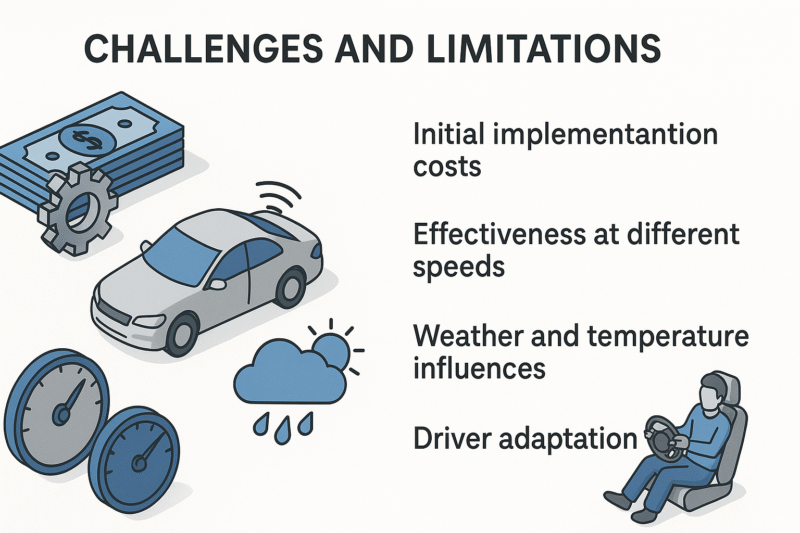
4.1. Initial implementation costs
Regenerative braking systems, while promising significant long-term benefits, come with substantial upfront costs. These expenses can be a significant hurdle for manufacturers and consumers alike. Let’s break down the key factors contributing to these initial implementation costs:
- Research and Development
- Manufacturing and Integration
- Vehicle Redesign
- Training and Education
| Cost Factor | Description | Impact |
|---|---|---|
| R&D | Extensive research to optimize system efficiency | High initial investment |
| Manufacturing | New production lines and processes | Increased vehicle cost |
| Vehicle Redesign | Modifications to accommodate the system | Extended development time |
| Training | Education for mechanics and drivers | Ongoing expense |
4.2. Effectiveness at different speeds
The efficiency of regenerative braking systems varies significantly across different speed ranges, which can limit their overall effectiveness:
- Low speeds: Less kinetic energy available for conversion
- High speeds: System may struggle to capture all available energy
- Optimal range: Typically most effective at moderate speeds
This variation in effectiveness can impact the system’s overall energy recovery potential and may influence driving behavior to maximize efficiency.
4.3. Weather and temperature influences
Environmental factors play a crucial role in the performance of regenerative braking systems:
- Cold temperatures: Battery efficiency decreases, reducing energy storage capacity
- Wet conditions: Reduced friction can limit the system’s ability to capture energy
- Extreme heat: May affect electronic components and battery performance
These weather-related challenges can significantly impact the system’s reliability and effectiveness, particularly in regions with extreme climates.
4.4. Driver adaptation
The successful implementation of regenerative braking systems often requires drivers to adjust their driving habits:
- Braking technique: Drivers must learn to anticipate stops and brake earlier
- Pedal feel: The brake pedal may have a different response compared to traditional systems
- Energy management: Understanding how to maximize energy recovery through driving style
This need for adaptation can lead to a learning curve for drivers, potentially impacting initial acceptance and optimal use of the technology.
As we move forward, it’s essential to consider how these challenges and limitations influence the current applications of regenerative braking systems in various vehicles and industries.
5. Current Applications
5.1. Electric and hybrid vehicles
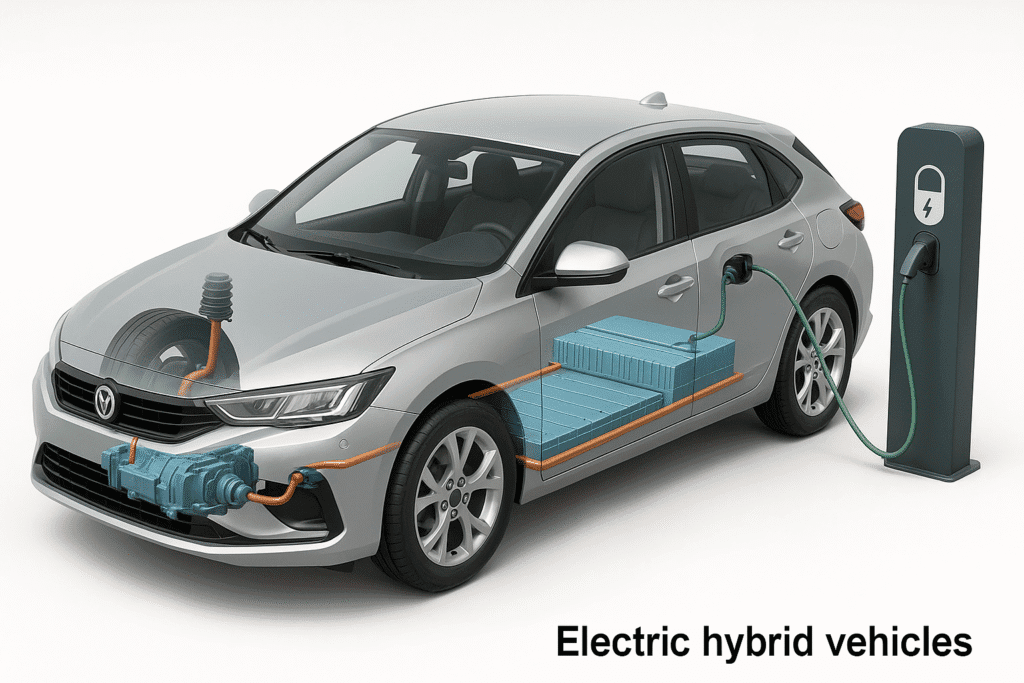
Regenerative braking has found its most prominent application in electric and hybrid vehicles, revolutionizing energy efficiency in the automotive industry. This technology has become a standard feature in modern EVs and hybrids, significantly extending their range and reducing overall energy consumption.
In electric vehicles, regenerative braking can recover up to 70% of the kinetic energy that would otherwise be lost as heat during conventional braking. This recovered energy is then stored in the vehicle’s battery pack, effectively increasing the driving range. For hybrid vehicles, the regenerative braking system works in conjunction with the internal combustion engine, further improving fuel efficiency.
Visit website: Autobiography Zone
Here’s a comparison of regenerative braking efficiency in different vehicle types:
| Vehicle Type | Energy Recovery Efficiency |
|---|---|
| Electric Cars | 60-70% |
| Hybrid Cars | 40-50% |
| Plug-in Hybrids | 50-60% |
Popular models utilizing regenerative braking include:
- Tesla Model S, X, and 3
- Nissan Leaf
- Chevrolet Bolt
- Toyota Prius
- BMW i3
5.2. Trains and trams
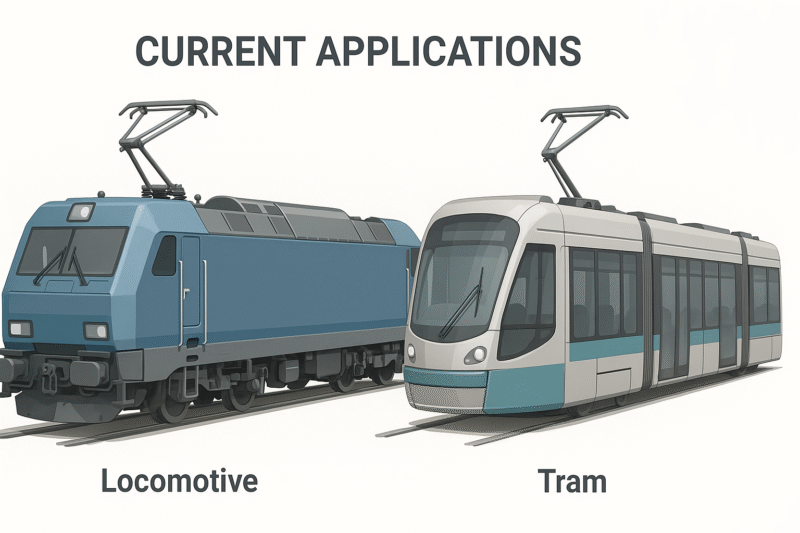
The application of regenerative braking in trains and trams has led to significant energy savings in the public transportation sector. When a train or tram decelerates, the electric motors act as generators, converting kinetic energy into electrical energy. This recovered energy can be:
- Fed back into the power grid
- Stored in onboard energy storage systems
- Used to power auxiliary systems on the vehicle
Regenerative braking in trains can recover up to 30% of the energy used during acceleration, resulting in substantial energy savings for rail operators. This technology is particularly effective in urban rail systems with frequent stops and starts.
5.3. Industrial machinery
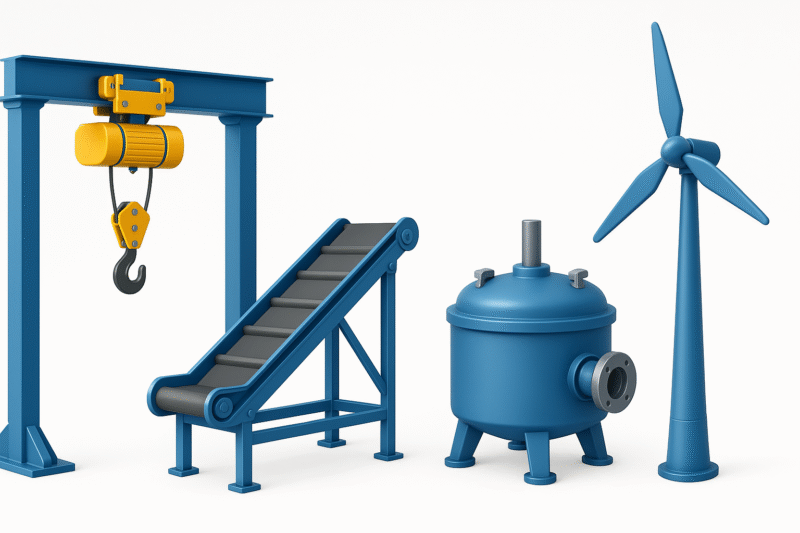
In the industrial sector, regenerative braking has found applications in various types of machinery, including:
- Cranes and hoists
- Conveyor systems
- Centrifuges
- Wind turbines
For example, in large industrial cranes, regenerative braking can recover energy during the lowering of heavy loads. This recovered energy can then be used to assist in lifting operations or fed back into the facility’s power grid.
Visit website: Autobiography Zone
5.4. Elevators and escalators
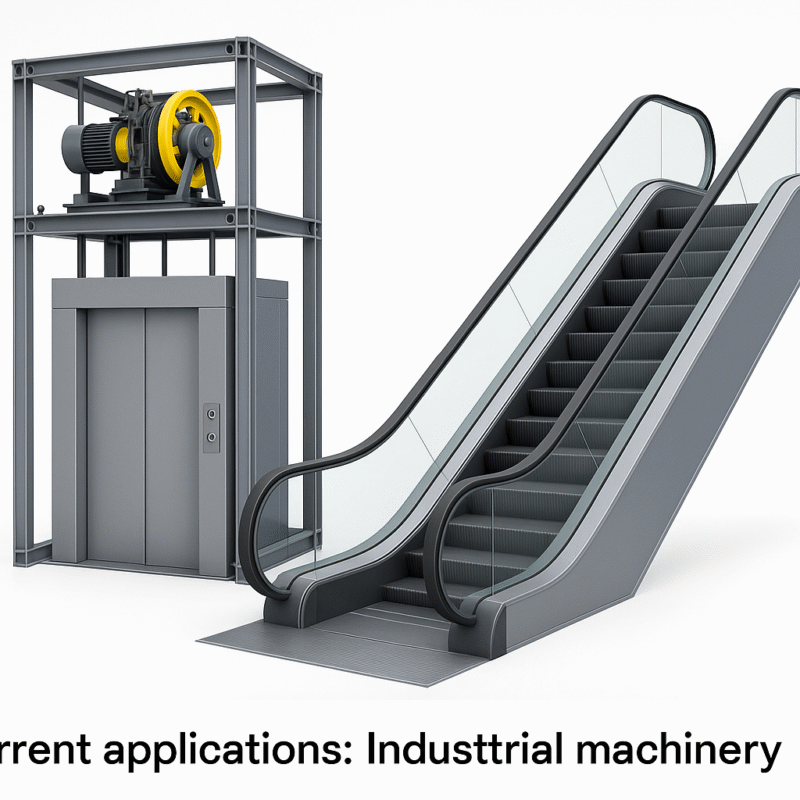
Regenerative braking technology has also made its way into vertical transportation systems. In modern elevators, the energy recovered during descent or deceleration can be:
- Fed back into the building’s electrical system
- Used to power other elevators in the same group
- Stored in capacitors for later use
Some escalator systems also incorporate regenerative braking, recovering energy as passengers descend. This application is particularly beneficial in high-traffic areas like shopping malls and transit stations.
The implementation of regenerative braking in elevators can lead to energy savings of up to 30%, significantly reducing a building’s overall energy consumption and operating costs.
As we’ve seen, regenerative braking has found diverse applications across various industries, from personal transportation to large-scale industrial operations. This widespread adoption highlights the technology’s versatility and effectiveness in improving energy efficiency. In the next section, we’ll explore the exciting future developments in regenerative braking technology.
6. Future Developments
6.1. Advancements in energy storage technology
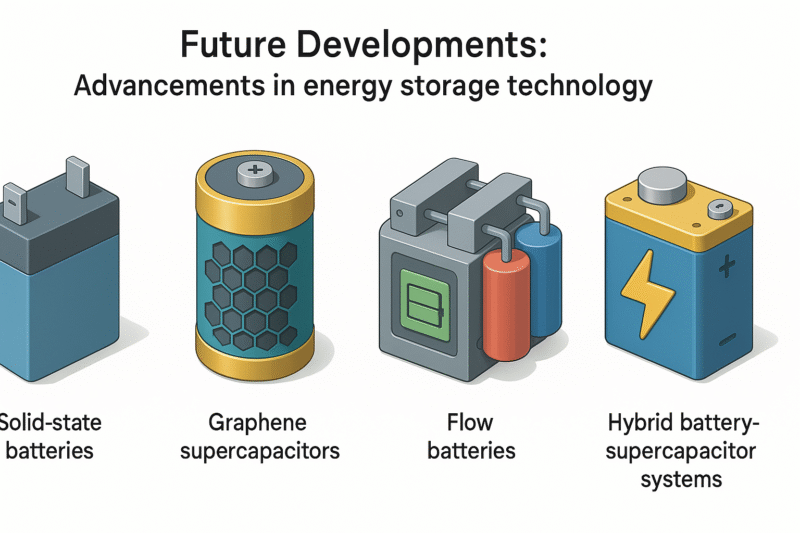
As regenerative braking technology continues to evolve, one of the most crucial areas of development is energy storage. Current systems primarily use lithium-ion batteries, but researchers are exploring new materials and designs to enhance capacity, charging speed, and overall efficiency.
Some promising advancements include:
- Solid-state batteries
- Graphene supercapacitors
- Flow batteries
- Hybrid battery-supercapacitor systems
| Technology | Advantages | Challenges |
|---|---|---|
| Solid-state batteries | Higher energy density, faster charging | Manufacturing scalability |
| Graphene supercapacitors | Rapid charging, long lifespan | Lower energy density |
| Flow batteries | Scalable capacity, long cycle life | Lower energy density |
| Hybrid systems | Combines benefits of batteries and capacitors | Complex management systems |
These advancements will enable vehicles to capture and store more energy from regenerative braking, ultimately extending the range and performance of electric and hybrid vehicles.
6.2. Integration with autonomous driving systems
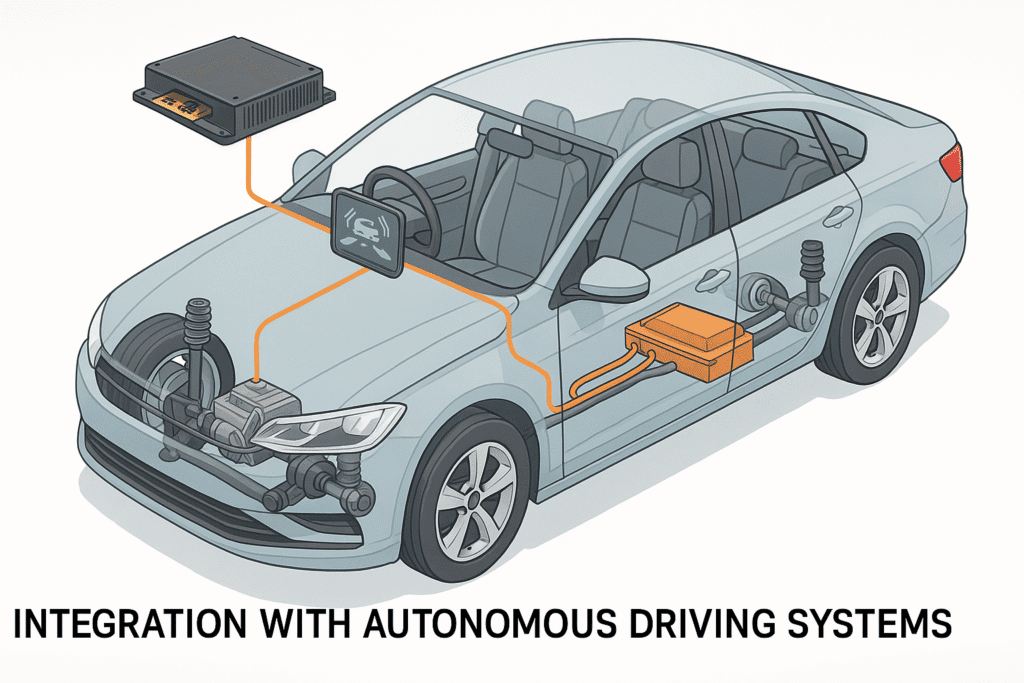
The future of regenerative braking lies in its seamless integration with autonomous driving technologies. As vehicles become increasingly self-driving, the potential for optimizing energy recovery through regenerative braking grows exponentially.
Key areas of integration include:
- Predictive braking based on traffic patterns and road conditions
- Coordination with adaptive cruise control for smoother deceleration
- Integration with vehicle-to-vehicle (V2V) communication for enhanced energy recovery in platoons
- Optimization of braking strategies based on real-time energy demand and battery state
By leveraging artificial intelligence and machine learning algorithms, autonomous vehicles will be able to make split-second decisions on when and how to apply regenerative braking for maximum efficiency and energy recovery.
6.3. Potential for regenerative suspension systems
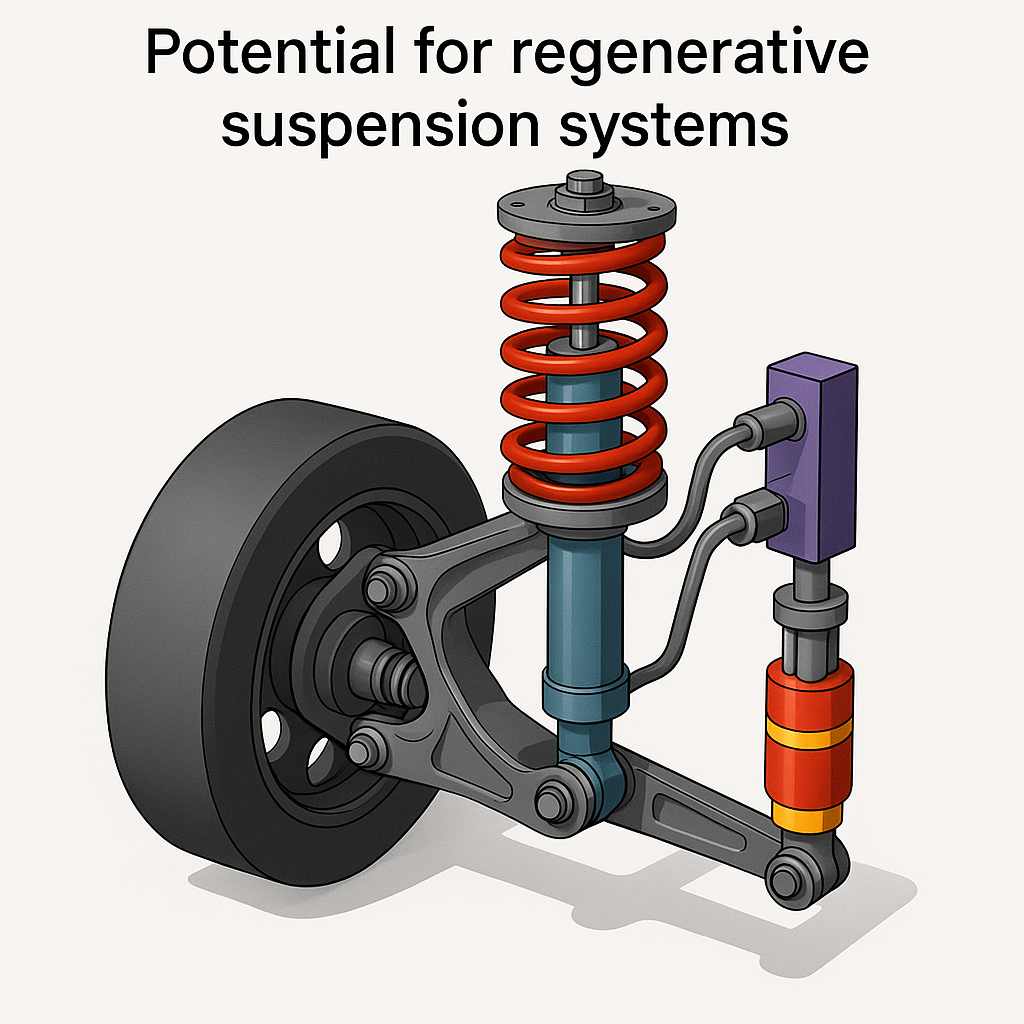
While regenerative braking focuses on recovering energy from deceleration, innovative engineers are now exploring ways to harness energy from vertical motion through regenerative suspension systems. This technology aims to convert the kinetic energy from a vehicle’s vertical movement into electrical energy, further improving overall efficiency.
Potential benefits of regenerative suspension systems include:
- Additional energy recovery, especially on rough roads
- Improved ride comfort through active suspension control
- Reduced wear on traditional suspension components
- Enhanced vehicle stability and handling
Although still in early stages of development, regenerative suspension systems could work in tandem with regenerative braking to create a more comprehensive energy recovery system for future vehicles.
As we look ahead, these advancements in energy storage, integration with autonomous systems, and the potential for regenerative suspension mark exciting developments in the field of regenerative braking. These innovations promise to push the boundaries of energy efficiency in transportation, bringing us closer to a more sustainable future on the roads.
7. FAQs
1. What is regenerative braking?
Regenerative braking is a system that captures and converts kinetic energy from a moving vehicle into electrical energy during deceleration. This energy is then stored in the vehicle’s battery for later use, improving overall efficiency.
2. How does regenerative braking differ from conventional braking?
Conventional braking systems use friction to slow down a vehicle, dissipating energy as heat. In contrast, regenerative braking recovers a portion of this energy, converting it into electricity. Here’s a comparison:
| Aspect | Conventional Braking | Regenerative Braking |
|---|---|---|
| Energy | Wasted as heat | Partially recovered |
| Brake wear | Higher | Lower |
| Efficiency | Lower | Higher |
| Complexity | Simpler | More complex |
3. Which types of vehicles use regenerative braking?
Regenerative braking is commonly found in:
- Electric vehicles (EVs)
- Hybrid electric vehicles (HEVs)
- Plug-in hybrid electric vehicles (PHEVs)
- Some electric trains and trams
4. How much energy can regenerative braking recover?
The amount of energy recovered varies depending on factors such as vehicle type, driving conditions, and system efficiency. Typically, regenerative braking can recover between 10-70% of the energy that would otherwise be lost during braking.
5. Does regenerative braking completely replace conventional brakes?
No, regenerative braking works alongside conventional friction brakes. While it can handle most of the braking in normal driving conditions, conventional brakes are still necessary for emergency stops and when the battery is fully charged.
6. Can regenerative braking extend the range of electric vehicles?
Yes, by recovering energy that would otherwise be lost, regenerative braking can extend an EV’s range by up to 10-25%, depending on driving conditions and vehicle design.
7. Are there any downsides to regenerative braking?
While generally beneficial, regenerative braking has some limitations:
- Reduced effectiveness at low speeds
- Potential for a less smooth braking feel
- Increased complexity and cost of the vehicle’s powertrain
8. How does regenerative braking affect battery life?
Regenerative braking can have both positive and negative effects on battery life. While it reduces overall battery usage by recovering energy, frequent charging cycles from braking can potentially impact long-term battery health. However, modern battery management systems are designed to mitigate these effects.
9. Can drivers control the strength of regenerative braking?
Many electric and hybrid vehicles allow drivers to adjust regenerative braking strength. This feature, often called “regenerative braking levels” or “regen modes,” enables drivers to customize their driving experience and energy recovery.
10. Is regenerative braking only used in automotive applications?
While most commonly associated with vehicles, regenerative braking technology is also used in:
- Elevators
- Industrial equipment
- Wind turbines (to control blade speed)
- Exercise equipment (to power displays)
These applications demonstrate the versatility and potential of regenerative braking technology across various sectors.
Regenerative braking represents a significant leap forward in vehicle technology, offering numerous benefits for both drivers and the environment. By harnessing kinetic energy that would otherwise be lost, this innovative system improves fuel efficiency, reduces wear on traditional braking components, and contributes to lower emissions. While challenges such as system complexity and limited effectiveness at high speeds exist, ongoing research and development continue to address these issues.
As we look to the future, regenerative braking is poised to play an increasingly important role in the automotive industry, particularly in electric and hybrid vehicles. Its potential to enhance energy efficiency and reduce environmental impact makes it a crucial technology for sustainable transportation. Whether you’re a car enthusiast or simply interested in eco-friendly innovations, understanding and embracing regenerative braking is a step towards a greener, more efficient future on the roads.
Visit website: Autobiography Zone
